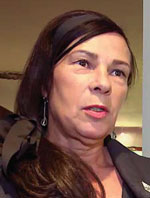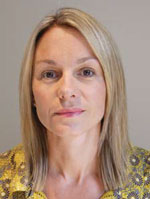In common with the telecoms and IT sectors, the Internet of Things (IoT) is an industry in which men make up the majority of workers. The imbalance continues thanks to the far lower number of women entering engineering courses and the still lower rate of women reaching the highest levels of businesses. However, writes George Malim, the scale, scope and variety of IoT means a far more diverse workforce is required
Although the term feminism originated in the 1880s, it has taken two world wars and social revolutions across the globe to reach the current situation of a workforce dominated by men who still benefit from higher rates of pay for the same work, enjoy greater career prospects and do not face the same expectations of balancing their careers with other aspects of their lives that women do. The technology industry, with its non-traditional culture should not be like this but the gender imbalance remains stark, largely because few women enter the industry in the first place.
In the technology market, recent research from PwC has found that only 3% of women would consider a career in technology as a first choice and, just 27% of female students said they would consider a career in technology at all. In contrast, 61% of men said they would. This goes a long way towards explaining the gender imbalance and the research also found that only 5% of leadership positions in the technology sector are held by women.
A survey by ISACA has identified the top five barriers experienced by women in technology which reveal reluctance isn’t simply because women find engineering unappealing. Lack of mentors was cited by 48% of women, lack of female role models was cited by 42%, gender bias in the workplace was cited by 39%, unequal growth opportunities compared to men by 36% and unequal pay for the same tasks by 35%, illustrating the scale of work that needs to be done to improve the attractiveness of a technology career for women.
The telecoms industry is trying hard and results are starting to be seen. A recent European Commission study, titled ‘Women in the Digital Age’ found that there are four times more men than women in Europe with ICT-related studies behind them. However, the same study found that the telecoms services sector has the highest percentage of women on boards in Europe, representing a 46% increase between 2011 and 2015. It is the only sector in which all companies have at least one woman on their board. Nevertheless, at this year’s Mobile World Congress, just 24% of attendees were women.
IoT is a different animal sitting between traditional IT and telecoms and linking into multiple different vertical industries. In some respects, it’s a blank sheet of paper with new apps, services and technologies to be developed, refined and brought to market and the potential outcomes of working in it are fascinating and broad. This means it does not have to be constrained by the dogma of traditional business, nor replicate gender imbalance from other sectors.
With this in mind, IoT Now brought together a group of women in IoT to report their views and increase understanding of the challenges women face in IoT. We spoke to a range of senior executives and also to the next generation of women in IoT. Significantly, our interviewees prefer to focus on fostering diversity in general rather than singling women out as the focus of initiatives to attract the next generation of innovators and leaders to IoT.
Gilli Coston, senior vice president EMEA, KORE
IoT Now: How did you arrive at your current position and what attracted you to IoT?

KORE
Gilli Coston: What was interesting was working around Blackberry reselling and SMS before you could send an SMS to one shortcode. This was before ringtones and logos and multimedia messages and there was no interoperability. I kept talking to customers about what they were doing with their business and apps and I was able to join the dots to see what was happening in the market place. There were a lot of business problems and not a lot of data around to address them.
I then went with a proposal to O2, who I was working for, and asked them for six months totrial a new unit. It all happened by accident. It wasn’t IoT or even M2M then but the unit got traction in fleet management and led to me becoming head of IoT/M2M at O2 UK.
IoT Now: Should IoT be looked upon differently to the technology industry in general in terms of fostering diversity and its potential to retainand engage women?
GC: There are similarities between IoT and the technology industry in general but the challenge is how to ensure everyone gets a fair chance and a good opportunity while also ensuring the customer gets a good experience. IoT is highly fragmented and, for us at KORE, that’s exciting because more fragmentation means more opportunities for us. It also means IoT presents opportunities for people to take different directions in their careers and follow those.
The number of different places that IoT can affectis much more inclusive than just B2B apps thatM2M addresses and there is the potential to include the whole world and make it a safer and better place. New types of learning and new social norms will be formed as part of this changeand it’s tremendously exciting to work within that.
IoT Now: What needs to happen to encourage more women into IoT?
GC: I love working at KORE and I love my job but I don’t think it’s exceptional or different that I’m a woman doing it. How to encourage people with bright ideas to enter the industry is a challenge and you have to come up with new ways of working. The next generation does not want to work in traditional ways with a top down hierarchy which means we have to transform. However, this is not a feminist focus. In my early career it took some really brilliant men, such as Dr Mike Short, the former vice president of Telefónica Europe, who were bold and had vision to further my career and my knowledge. We can all do things to mentor the next generation and bring them forward and, in the pre-career phase, we can do more to encourage more women into engineering. Good work is being done by the IEEE and GSMA in this area.
Having said that, we should not exclude men by focusing exclusively on women in IoT. If you do so, you end up excluding great speakers and decision makers. We need those people to embrace diversity and the inclusion of all gendersa nd races. Women don’t want to be the targets of positive discrimination.
Kelly Gay, the vice president of Vertical Services Sales & Customer Management at Sierra Wireless
IoT Now: Why did you choose a career in IoT?

Sierra Wireless
Kelly Gay: IoT is a growth sector, and everyone wants to be a part of something that is growing. While the predictions for the overall size, speed and sub-segments of IoT growth vary from analyst to analyst, there is no one following technology who does not expect continued success in IoT. It is early in its growth, is ever expanding, and has a tremendous future, which is an excellent formula for career success.
Compared to other technology sectors, IoT falls into the more technical side of the technology industry because it requires so much expertise and knowledge to be effective. IoT gives women in particular an opportunity to differentiate themselves through knowledge-based competence. Speaking from personal experience, it was a steep climb for several months to reach a point of contribution in my early days in the industry, since I didn’t truly understand the full scope and complexity of IoT. Now I am able to bring value to our customers every day through technologies that make the world a better place and make work fun and challenging.
IoT Now: Why do you believe IoT a great sector for women to work in – or not?
KG: It is absolutely a great sector for women, but really anyone – woman or man – to work in. Even though we’ve heard the term IoT used in the technology industry for a very long time, we are just now starting to truly see IoT rise to its potential. What makes this industry interesting is that IoT is at the forefront of a new wave of advancements that improve the operation and efficiency of organisations, provide excellence in the services and offerings that enterprises are bringing to market, and offer continually improving quality of life to people on a daily basis in many aspects of their lives. Examples gaining momentum in IoT for us as individuals include connected cars, healthcare offerings, and personal security and tracking.
With women still under-represented in IoT, this provides an extraordinary opportunity to differentiate yourself through capability, knowledge and experience.
IoTNow: How do you see the future of women in IoT?
KG: IoT is a great home for women. Like so many sectors of the broad technology landscape, the IoT industry will find itself encouraging diversity of all types and engaging and retaining top talent, including women. It may just take some time. So many sub-segments, or career paths within subsegments, of the technology industry have stepped up over time to align their image of themselves with the promise of what they do. The broad technology industry is smart, youthful in thinking, creative, optimistic, results-oriented, striving for a better world. It leads the way to advancement. It thinks of itself as a force for good.
For IoT to achieve its potential as the next great technology wave, it will embrace diversity and inclusiveness because it will have to in order to attract the talent needed to fulfil its enormous future.
Tracy Hopkins, the chief marketing officer of Everynet
IoT Now: What’s your career background and how have you got to your current position?

Everynet
Tracy Hopkins: It’s all about luck and being where you are at the right time to take the next opportunity. I began my career doing an apprenticeship with Philips in engineering and I was the only woman in a class of 70. I was a video and audio engineer for editing in recording studios and I wanted to work for Dolby. In order to do so, I was advised to go to Cambridge and I got into the wireless industry at the dawn of Bluetooth. I worked on putting Bluetooth in the Sony PlayStation and the iPhone.
For me, in the forefront, it was always about new technology and trying to make it work. That took me into the machine-to-machine (M2M) market and from there on it went through into IoT platforms. Suddenly it was quite exciting to be building an ecosystem. IoT is all about business models and I really care about business models. I’m really interested in how IoT, whatever technology is involved, can actually deliver.
IoT Now: Is IoT different from other technology sectors?
TH: It’s marketed as being different but, if you go back to any technology from the minute it was accepted to having a billion users, the cycle takes ten years. IoT depends on business models so it will take that ten years. However, in everybody’s head it has been accepted already but practically, it hasn’t. There’s so much work to do on the business models. For instance, if I sold a chip into a PlayStation everyone knew it was going to make money but if a smart city of smart agriculture chip is brought to market, who is going to make money from it and how?
Sometimes it’s difficult for a council or a company to invest money in deploying the services and it can be a long time before the powers that be see the benefit of that investment.
IoT Now: To what extent do you see IoT as a sector of equal opportunities for all?
TH: I see everywhere as areas for equal opportunities. Being a woman engineer and on the board of a big company, as much as I believe in equal opportunities I don’t think men and women are equal because they bring different experiences and capabilities. Having said that, IoT does provide great opportunities for women because it touches so many other industries including agriculture, healthcare and life sciences to name just a few.
IoT Now: The tech sector is famously maledominated but IoT requires an outlook that includes creativity beyond engineering capability. What needs to happen to change this?
TH: Progress is being made but often girls don’t even know what engineering means. The don’t realise they could write some software that feeds the world or enables someone with no legs to dance. Engineering isn’t about getting dirty, it’s an amazing opportunity to change the world and do things you wouldn’t even think of.
For me, it’s nice to see lots of women and focus on women but it’s almost a situation of positive discrimination. In my whole career I’ve never been penalised for being a woman and I would prefer to see a focus on diversity in general. IoT is a complex value chain and a differentiated market place so it takes a multicultural team to have success. If you look at IoT, it could theoretically change the world so everyone should be involved.
Suzanne Lancaster, European marketing director at Aeris
IoT Now: How has your career developed to date, do you have any secrets to success you can share?

Aeris
Suzanne Lancaster: I started my journey as a marketing executive almost two decades ago. After finding a passion for the ever-changing world of software, I gradually rose up the ranks and today I lead European marketing for one of the most innovative IoT companies in the world – Aeris.
My commitment to the technology industry, learning about its intricacies and growing my network has been the key to my success. Keeping the passion alive for this fast-moving sector, which I find fascinating, has also been vital in my growth.
Another tactic I have used is to focus on surrounding myself with smart people. By actively seeking out and learning from these talented individuals, I have been able to continue my growth throughout my career. After all, your network is one of your most valuable assets – which is why I make every effort to grow mine via social networks, events, meetings and even when travelling.
IoT Now: Why did you choose a career in IoT?
SL: IoT found me. I’ve been in the technology space for more than 20 years, but predominantly in customer software before the opportunity arose for me to join Aeris three years ago.
I researched the industry and quickly discovered that the growing market was fascinating. I still find it amazing to see how many companies use connectivity in all manner of devices, such as sensors that track packages in transit, gadgets that follow divers in the oceans, and solutions which provide solar power to remote, off-grid locations.
Every industry that involves electronics, equipment or that moves can expect to be transformed by IoT over the course of the next decade. So, I wanted to use my skills and knowledge to be part of this exciting journey of innovation.
IoT Now: Do you believe IoT’s a great sector for women to work in?
SL: The tech sector does have a reputation for being male dominated, and IoT is no different. But, I believe that the amount of women in leadership roles is steadily increasing. That’s fantastic, not only because of diversity, but because we are seeing women embrace connected living.
I’ve also seen how IoT can help empower women. For instance, providing energy to offgrid communities has enabled women, and the wider communities, to set up their own microbusinesses; which would simply not have been possible before.
On a personal note, one of the great things about Aeris is that our chief executive, Marc Jones, is committed to diversity and I am proud to be part of this company with many inspirational female leaders.
IoT Now: How do you see the future of women in IoT?
SL: Women have a bright future in IoT. Potential applications of the technology can empower women, and there is also increasing diversity in the sector. However, we must do more to encourage more females to apply for roles.
I believe we can use a range of tactics to encourage more women to get involved in IoT, from changing terminology on job adverts, being flexible with working hours, and educating students about the technology and its applications relating to women. I think women often like to feel that their role is making a difference to the world and this is where IoT initiatives that show technology as a force for good will also help.
IoT Now: What would be your dream career – outside of IoT of course!?
SL: IoT has the potential to impact almost every industry, so it’s almost impossible to work in a sector more exciting than this. However, artificial intelligence has always intrigued me because, just like IoT, it has the potential to transform industries, promote innovation and change the world for the better.










